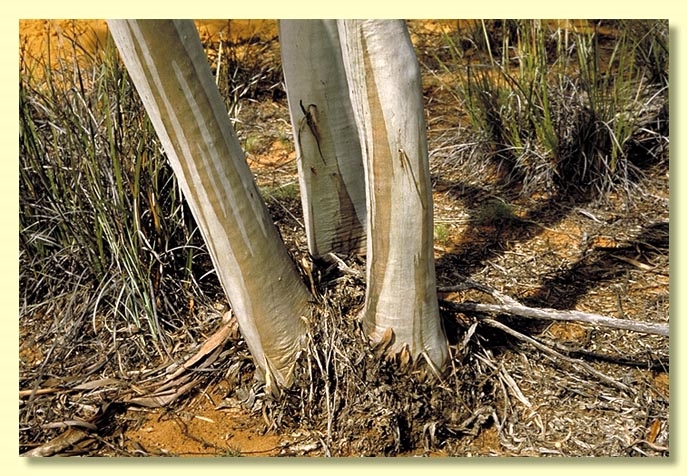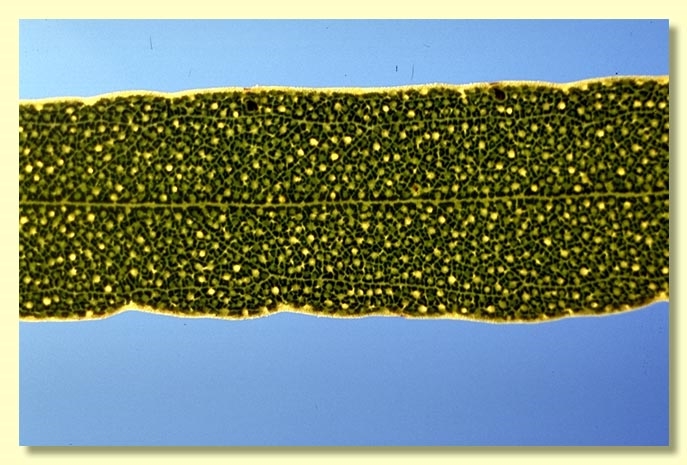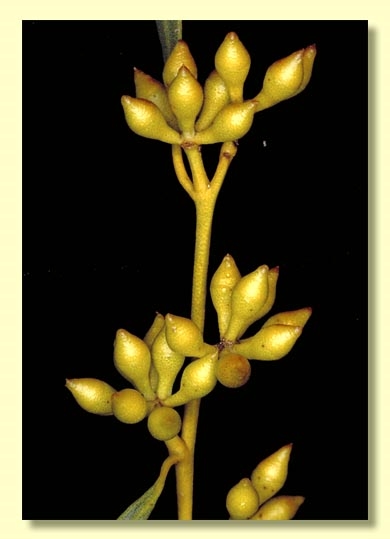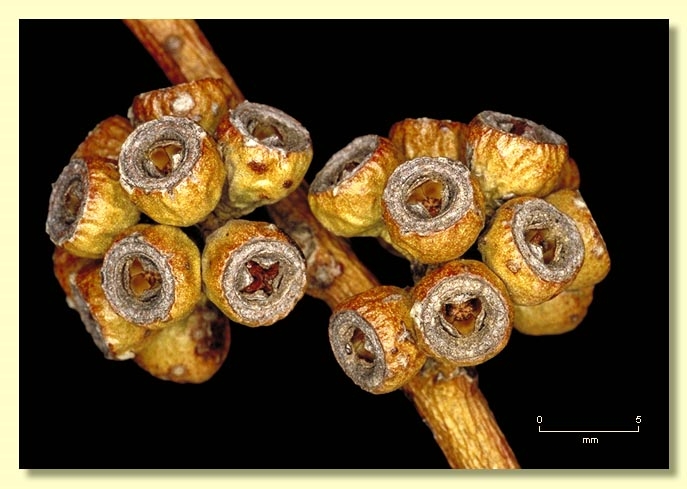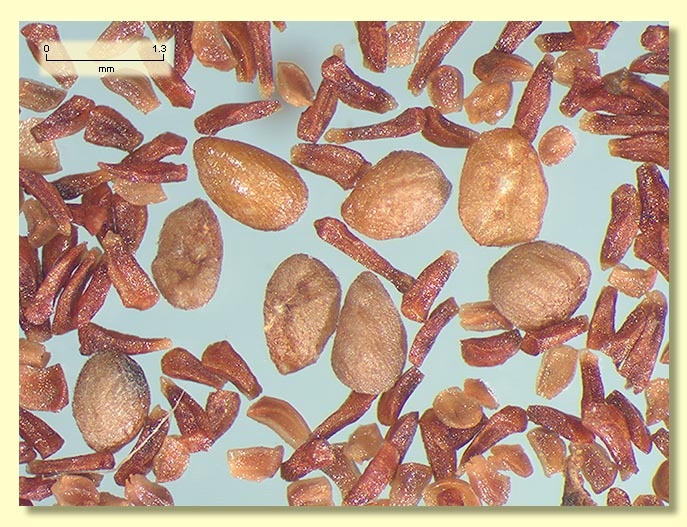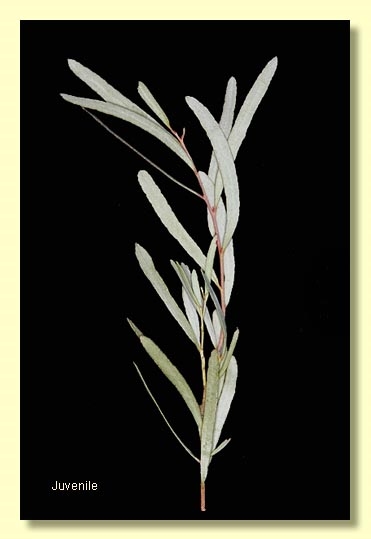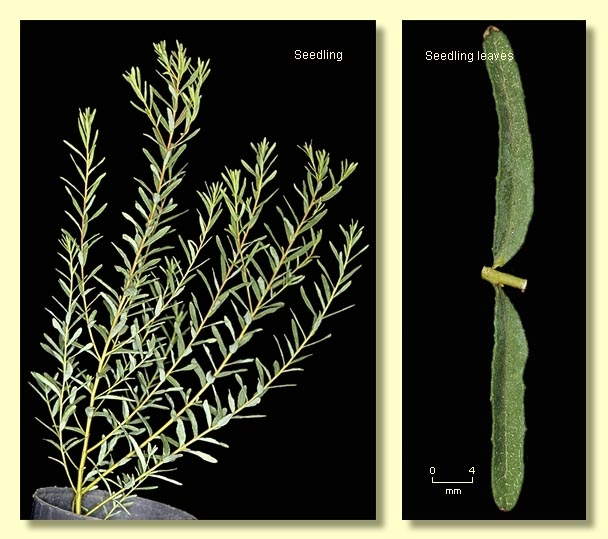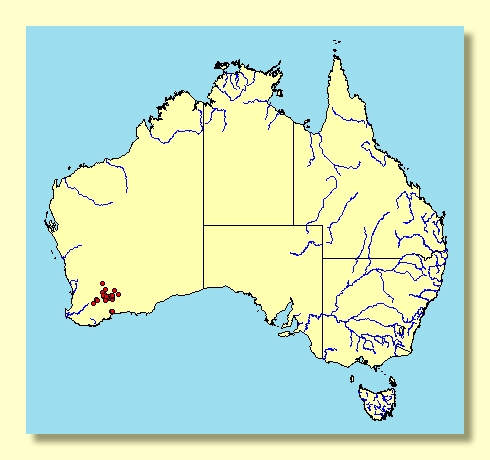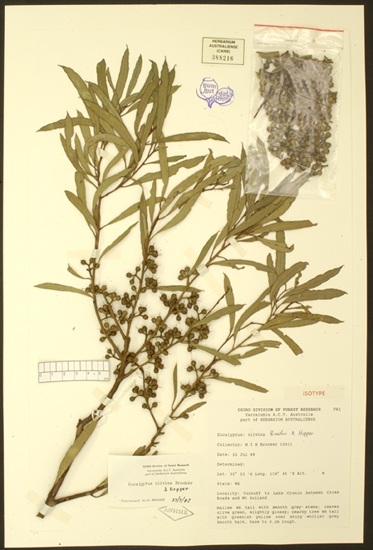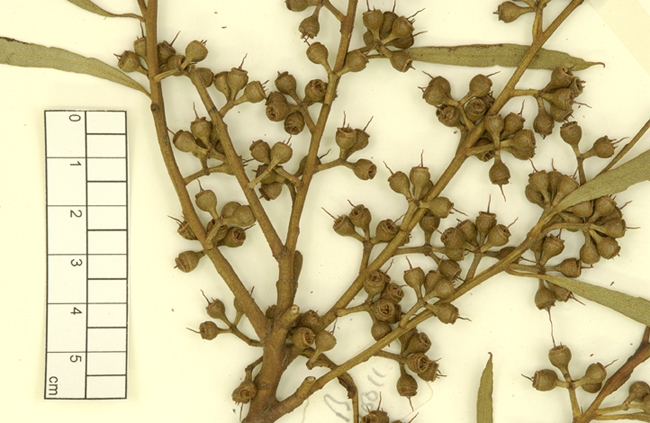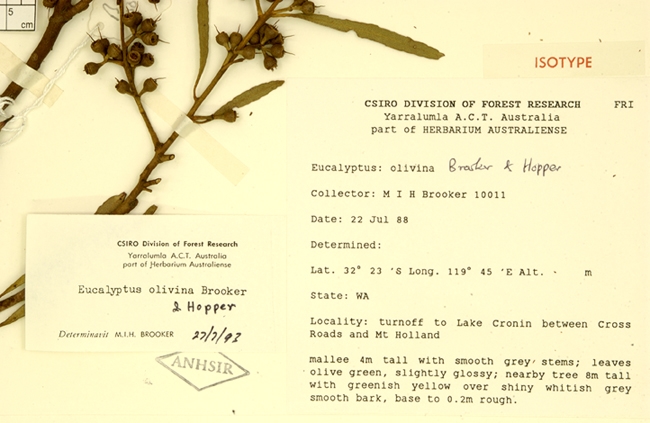Eucalyptus | Symphyomyrtus | Bisectae | Destitutae | Porantherae | Longiores
Euclid - Online edition
Eucalyptus olivina
Bark smooth throughout, grey to whitish over brown-grey, shedding in short strips.
Branchlets lacking oil glands in the pith.
Juvenile growth (coppice or field seedlings to 50 cm): stems rounded in cross-section; juvenile leaves held erect, very shortly petiolate, alternate, linear, 2.5–6.5 cm long, 0.2–0.6 cm wide, margins subcrenulate, grey-green (not glaucous), dull.
Adult leaves alternate, petioles 0.2–1.2 cm long; blade linear to narrowly lanceolate or falcate, 3.5–8.5 cm long, 0.3–1 cm wide, base tapering to petiole, margin distantly crenulate to entire, apex finely pointed, concolorous, green, dull but maturing very glossy, side-veins greater than 45° to midrib, reticulation dense, intramarginal vein present, oil glands intersectional.
Inflorescence axillary unbranched, peduncles angular, 0.4–1 cm long, buds 7 or 9, pedicellate, pedicels 0.2–0.3 cm long. Mature buds ovoid to fusiform (0.5–0.8 cm long, 0.25–0.35 cm wide), scar present, operculum usually beaked (0.3–0.5 cm long), stamens inflexed (rarely a few irregularly flexed), anthers cuneate-cuboid, adnate to filament apex (rigidly basifixed), dehiscing by sub-terminal pores, a few of the innermost stamens imperfectly formed, style long and straight, stigma blunt to tapered, locules 3(4), the placentae each with 4 vertical rows of ovules. Flowers creamy white.
Fruit pedicellate, pedicels 0.1–0.3 cm long, shortly barrel-shaped to cupular, 0.3–0.5 cm long, 0.3–0.6 cm wide, disc sometimes level, usually descending, valves 3(4), held near rim level.
Seeds brown to grey-brown, 1–2 mm long, flattened-ovoid, dorsal surface usually with longitudinal furrows but otherwise smooth, hilum ventral.
Cultivated seedlings (measured at node 10): cotyledons Y-shaped (bisected); stems rounded in cross-section, very warty; leaves always sessile, opposite for 6–16 nodes then becoming alternate, linear to narrowly oblong-elliptic, 1.5–4 cm long, 0.2–1 cm wide, margin minutely denticulate due to warts, discolorous, grey-green (not glaucous).
Flowering has been recorded in March.
A mallee or small tree, endemic to Western Australia, found on sandplain on the eastern fringes of the southern wheatbelt from south of Southern Cross and Gnarlbine Rock to Hyden, Varley and Lake Johnston, possibly also west of Hyden to Kulin and Narembeen. The bark is smooth and the adult leaves slightly glossy, light green to olive green, with margins often sub-crenulate.
Eucalyptus olivina belongs in Eucalyptus subgenus Symphyomyrtus section Bisectae subsection Destitutae because the buds have two opercula, cotyledons are Y-shaped and branchlets lack oil glands in the pith. Within this subsection E. olivina is one of a group of about 16 species, series Porantherae, that are further characterised by having anthers completely adnate to the staminal filaments, strongly inflexed stamens, densely reticulate leaves with intersectional oil glands and by the fruit with a distinct thick rim that includes a whitish descending disc. The small, glossy leaves of species in series Porantherae may result in confusion with species in series Heterostemones; however, the fruit alone usually distinguish the series. The fruit of series Heterostemones are thin-rimmed.
E. olivina has juvenile leaves that are linear-oblong and grey-green, which may relate it to E. latens, an uncommon understory species of the of the jarrah forest south-east of Perth. Mallees from the area west and north-west of Hyden may be intermediate between E. olivina and E. latens. E. olivina is perhaps more closely related to the taller tree, E. kumarlensis, found north of Salmon Gums, which differs in the green linear-oblong juvenile leaves and entire, green adult leaves. Both E. olivina and E. kumarlensis have seedlings that have small narrow leaves with warty margins and warty stems.


